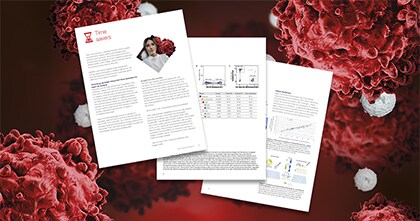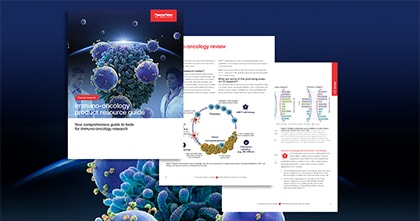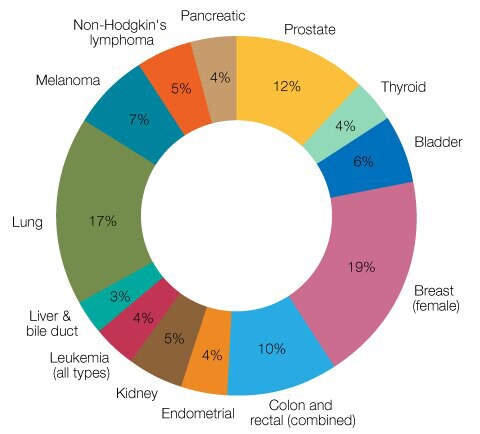Search
Solid Tumor Research

Solid tumors
It all starts with a single mutation. The DNA strand is now compromised. A mutation/duplication of a single nucleotide or a nucleotide depletion disrupts the DNA sequence. This change in the genome is irreversible and can lead to the transformation of a normal cell into a tumor cell. Cancer can spread to nearby tissues or remote organs through the lymph system and bloodstream.

Updated Cancer research guidebook
Learn how to maximize funding, save time, save precious samples, and more.

Updated Immuno‑oncology (I‑O) guide
Discover key I‑O research approaches, including checkpoint inhibitor therapy research, CAR T cell therapy research, and cancer vaccine therapy research.
Solid tumors contain abnormal and heterotypic cells that communicate through tight and gap junctions. In contrast with liquid tumors, as the cells multiply, they form a “mass” called a solid tumor and usually do not contain pockets of fluid, pus, air, or other substances. Solid tumors can be either non-cancerous (benign), pre-malignant (cells that have the potential to become malignant), or malignant (cancerous).
Solid tumors represent approximatively 90% of adult human cancers. They can develop in many parts of the human body, including the breast, lung, prostate, colon, melanoma, bladder, and kidney (Figure 1).
Examples of localized solid tumors:
- Carcinomas
- Sarcomas
- Lymphomas
- Carcinosarcomas
The genomic background of pediatric tumors is different from that of adult tumors. The same tumor types tend to have completely different mutation profiles compared to their adult counterparts. Statistics have revealed that in children, solid tumors make up about 40% of all cancers. The most common and aggressive type of solid tumor found in children is a brain tumor.

The multi-stage mechanism of metastatic tumors starts with breakthrough of primary cells and entry into the lymphatic system or peripheral circulation followed by infiltration of underlying tissue where they develop into tumors. Nearly all solid tumors require the formation of a neo-vasculature that allows them to grow and spread through vascular metastasis. Metastatic tumors represent the highest threat to cancer patient mortality (Figure 2).
Solid tumor anatomy or tumor microenvironment(TME) does not consist of cancer cells alone; it includes other cells as well:
- Cancer stem cells—possess stem cells properties and can reproduce over many generations
- Typical tissue cells—originate from the primary tissue or organ
- Mitotic division—actively growing cancer cells
- Necrotic process—dead cancer cells creating a necrotic area of tissue
- Connective or supportive tissue cells—provide structural support for the tumor (fat, cartilage, bone, and blood vessels)
- Immune cells—active (killing cancer cells) or passive (turned off by the tumor cells)
It is crucial to comprehend the heterogeneity of solid tumor’s microenvironment to tackle drug discovery and study of resistance and mutations.
Malignant, pre-malignant, and benign tumors each have their defining characteristics. Properly identifying these is a critical step every researcher needs to take. Learn more about the tools researchers are using today.
The human body has a remarkable way of announcing cancer’s presence through biomarkers. Discover how scientists are quickly locating and tagging them accurately.
Whether you are using formalin-fixed paraffin-embedded tissue samples or fresh-frozen tissue specimens, clinical researchers are empowered to investigate, diagnose, or analyze research tumor samples.
3D cellular models like organoids and spheroids offer an opportunity to better understand complex biology in a physiologically relevant context where 2D models have not proven as successful. Gain confidence to culture and analyze organoids and spheroids through verified protocols and educational resources.
仅供科研使用,不可用于诊断目的。
